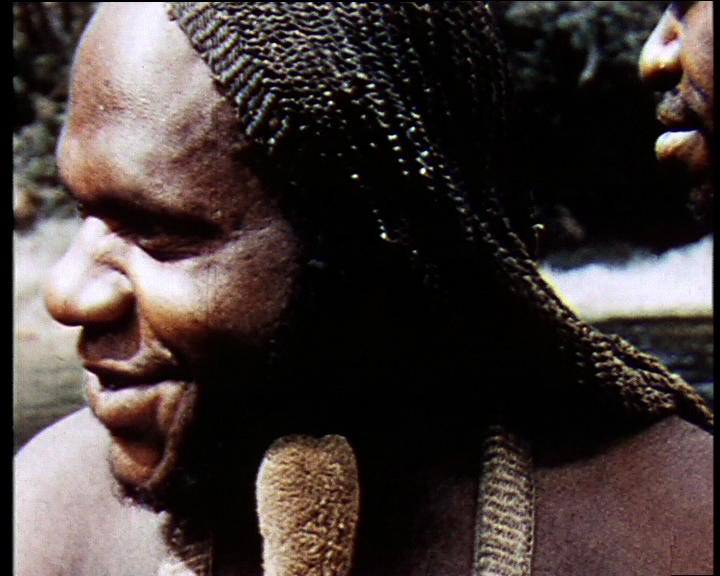

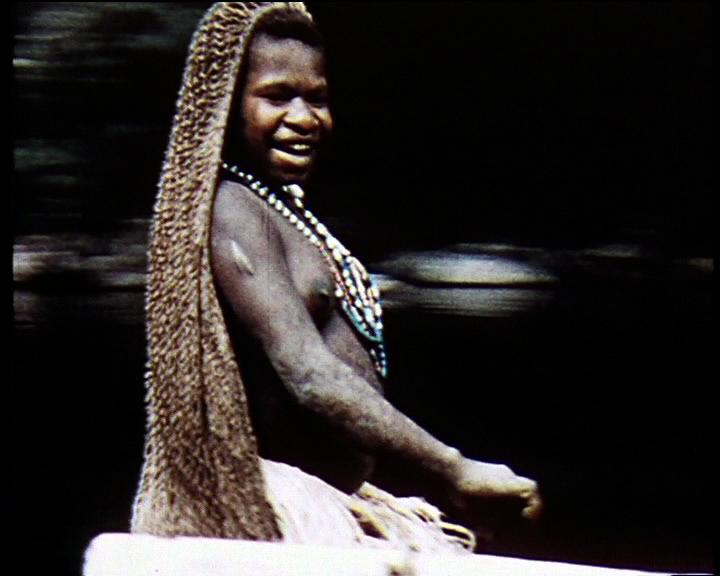

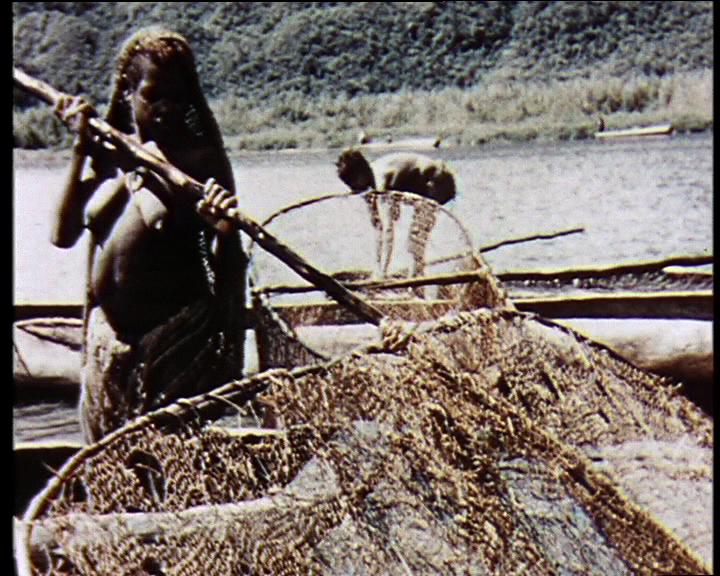

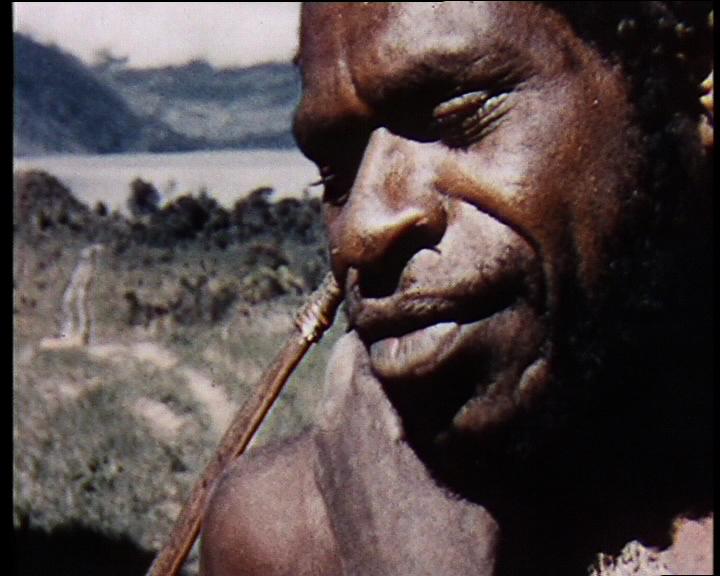

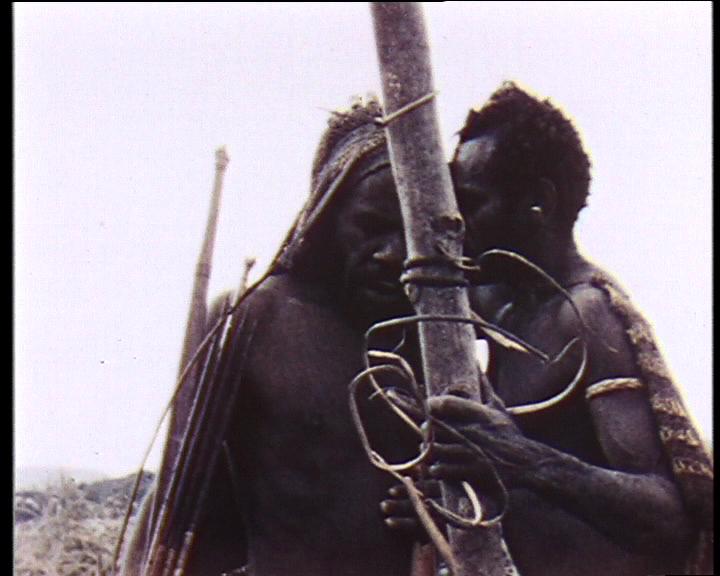

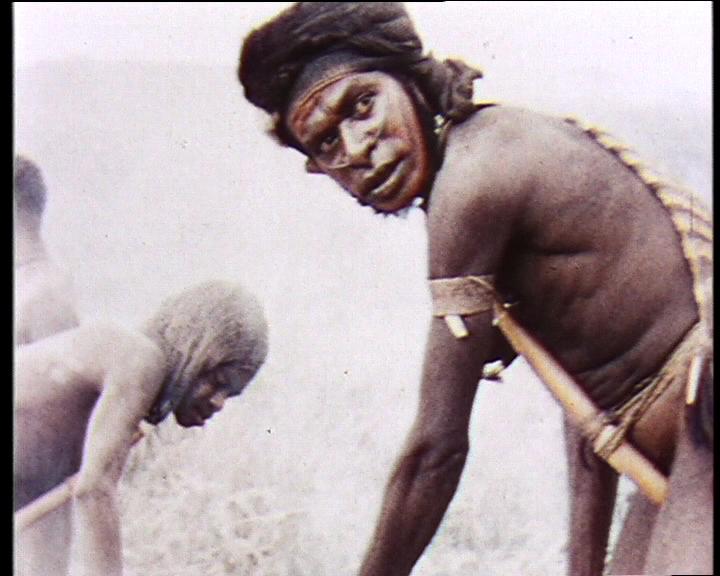



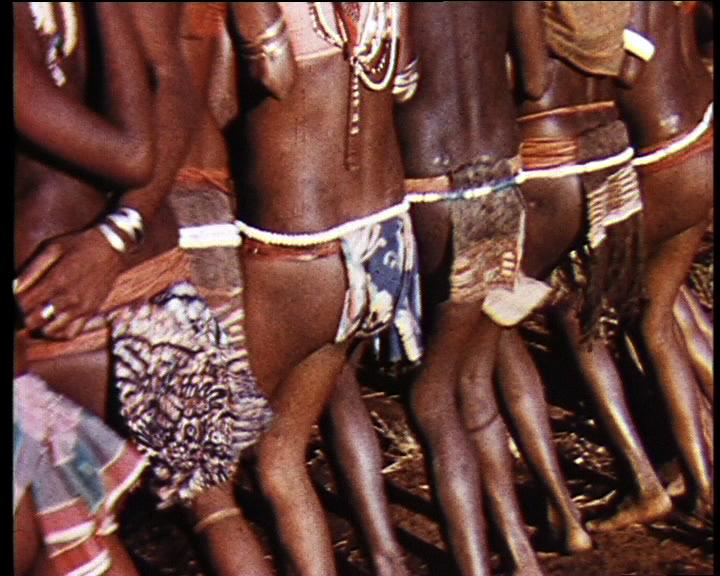

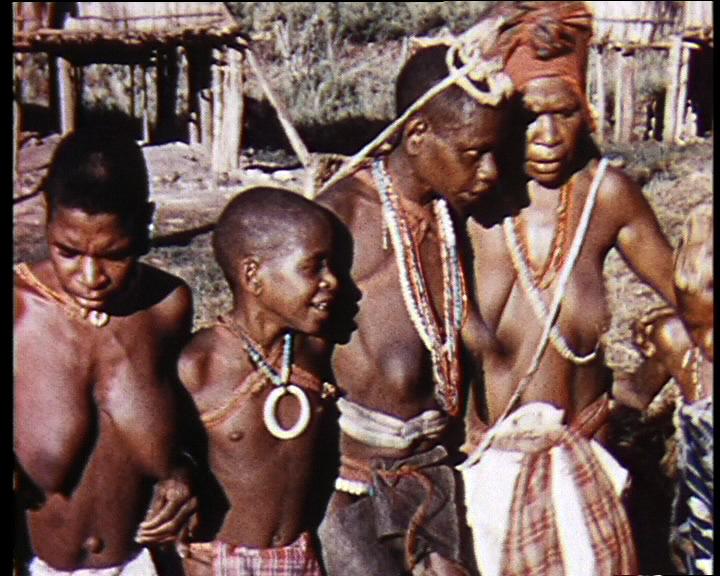

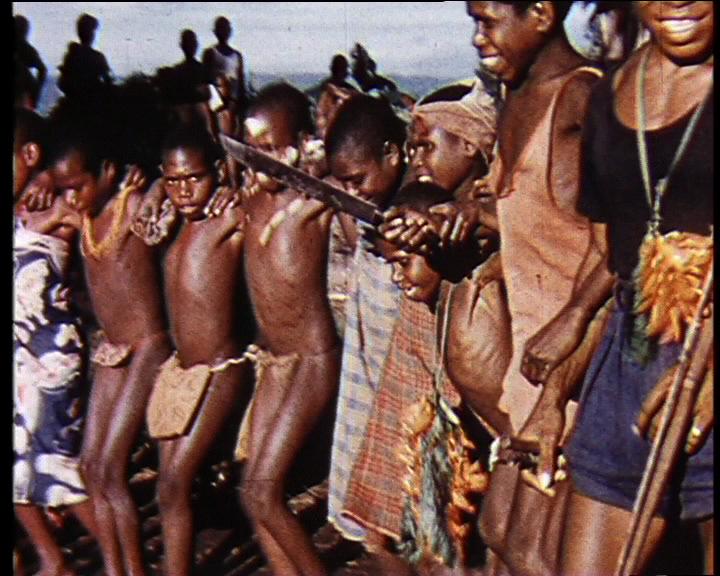

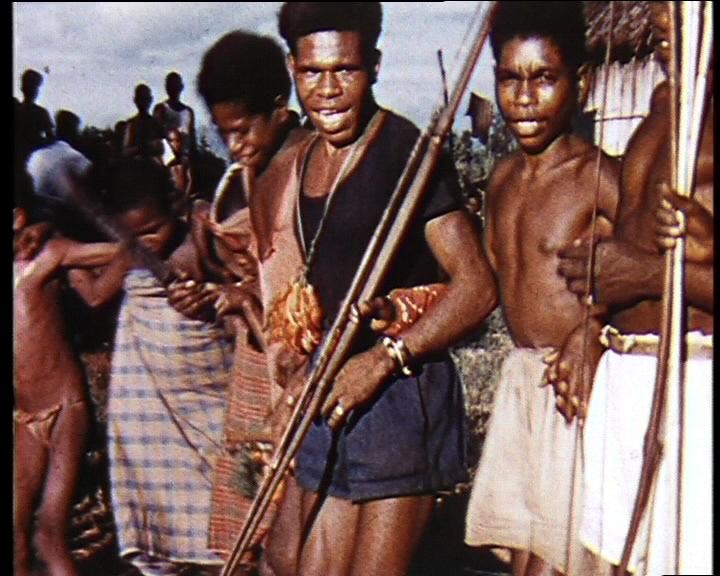

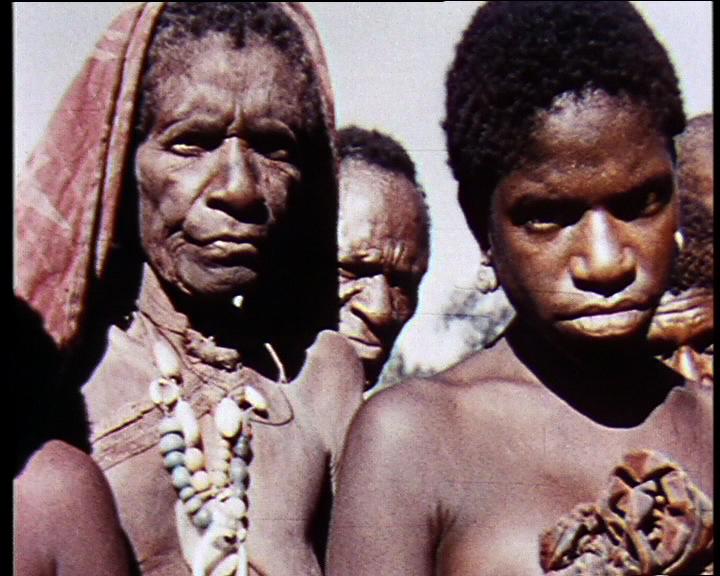

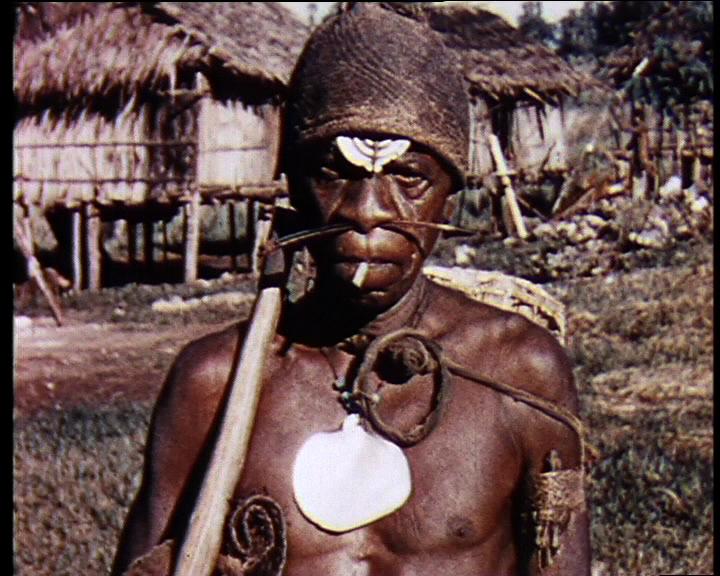

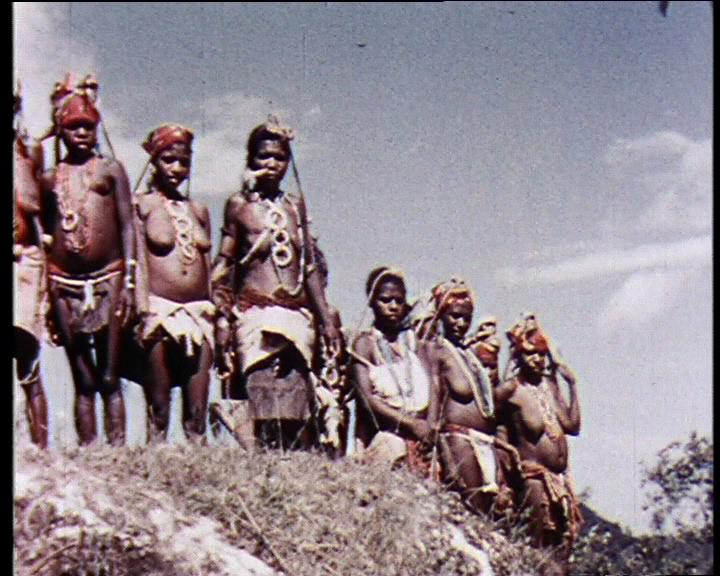

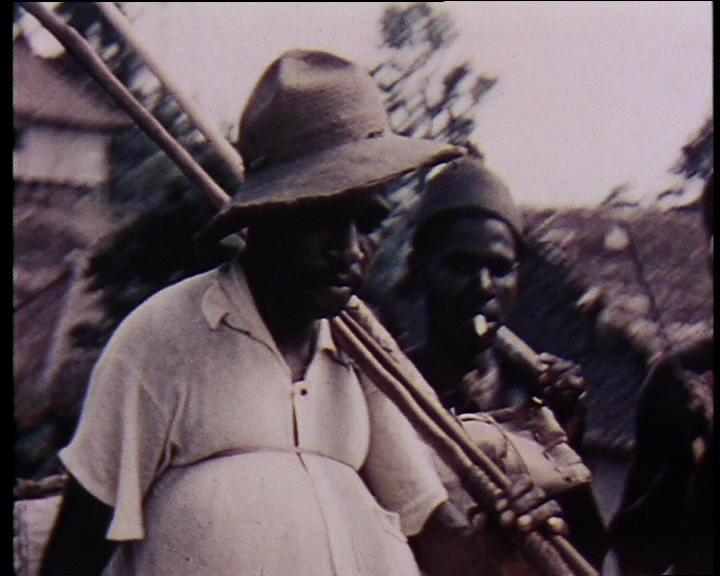

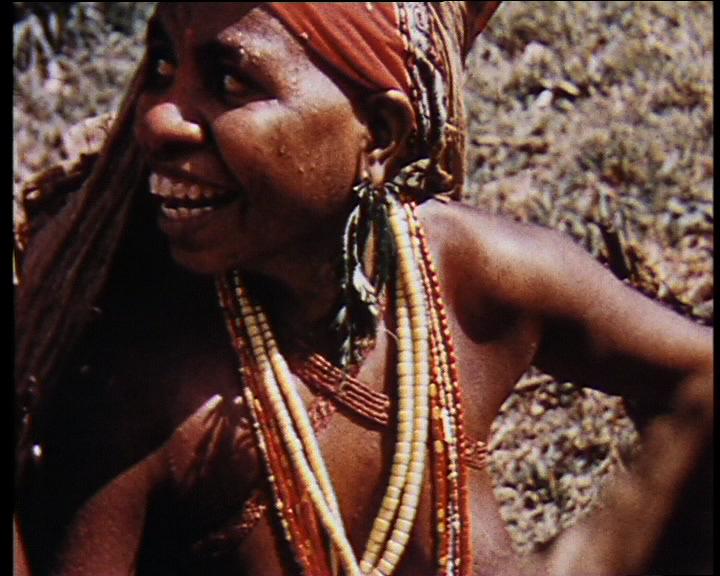

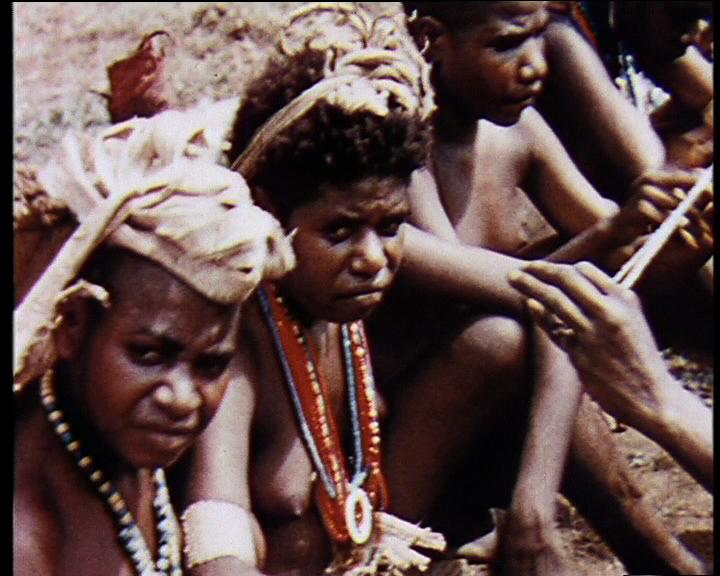

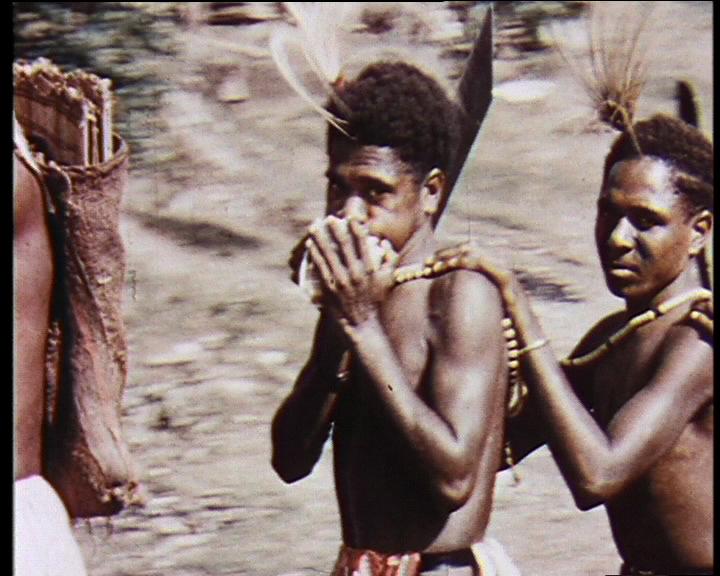

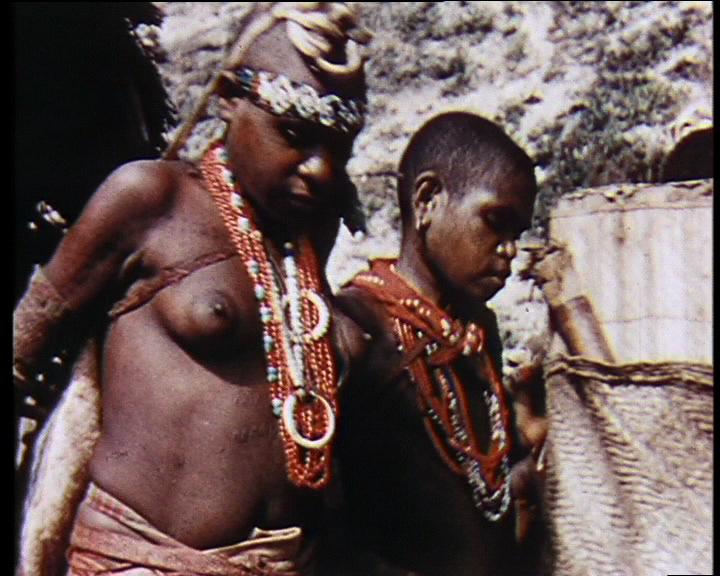

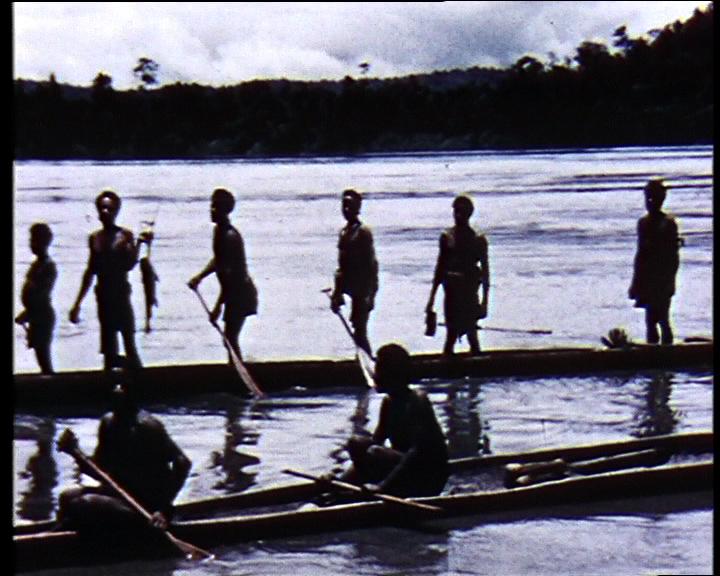

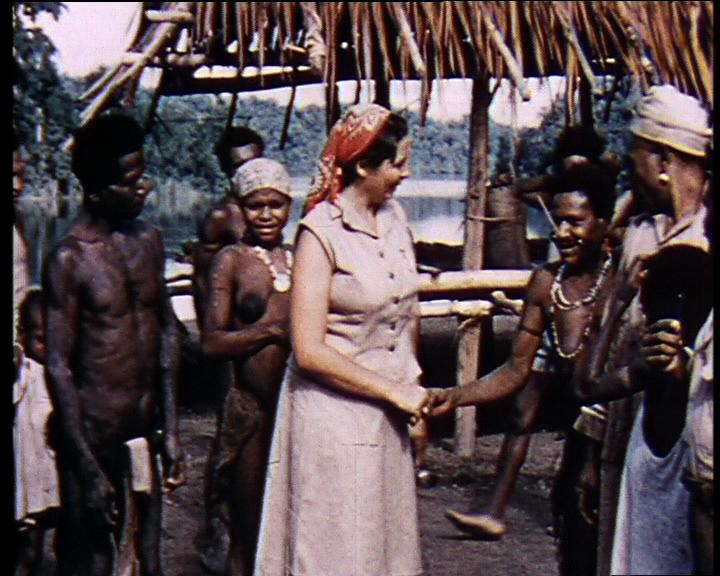

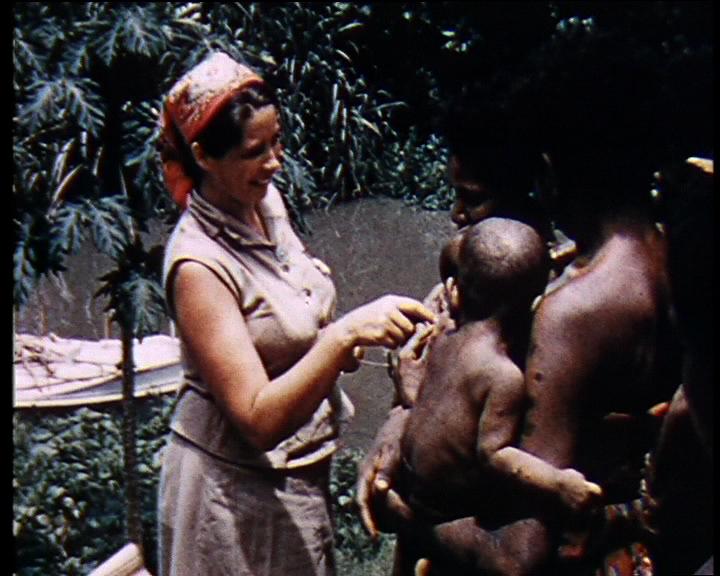

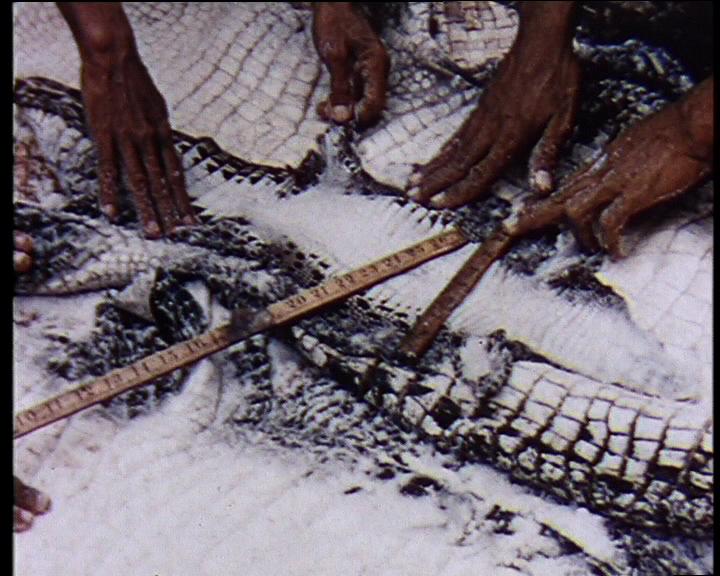

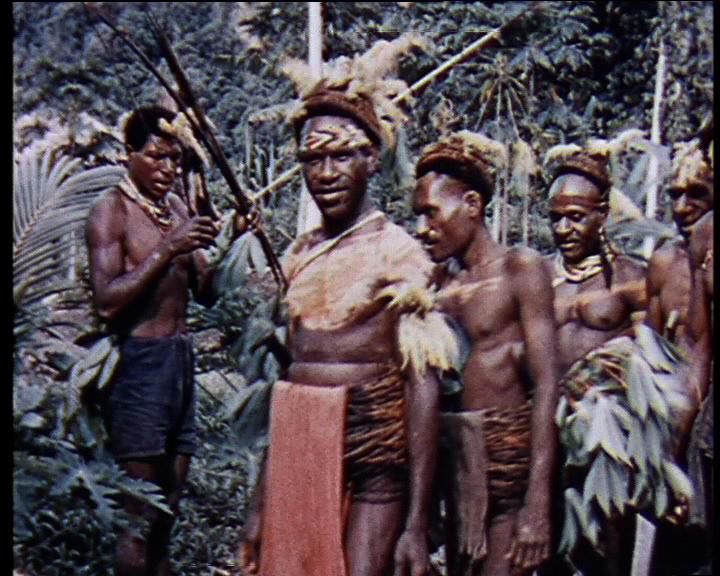

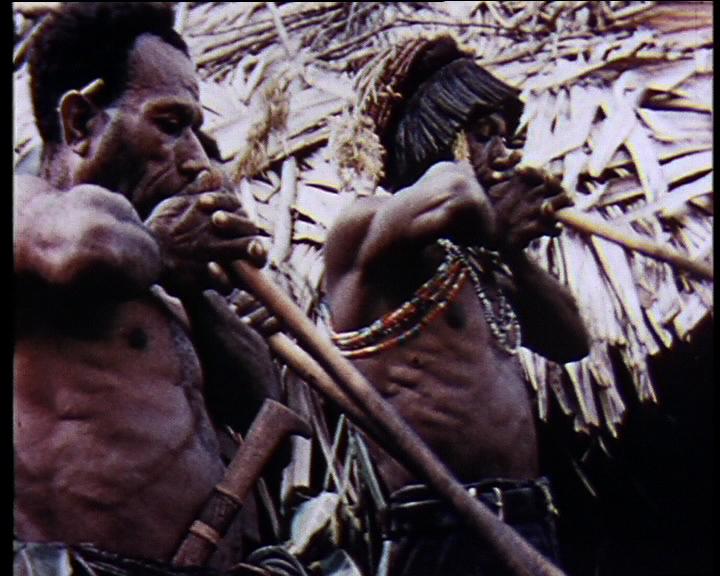

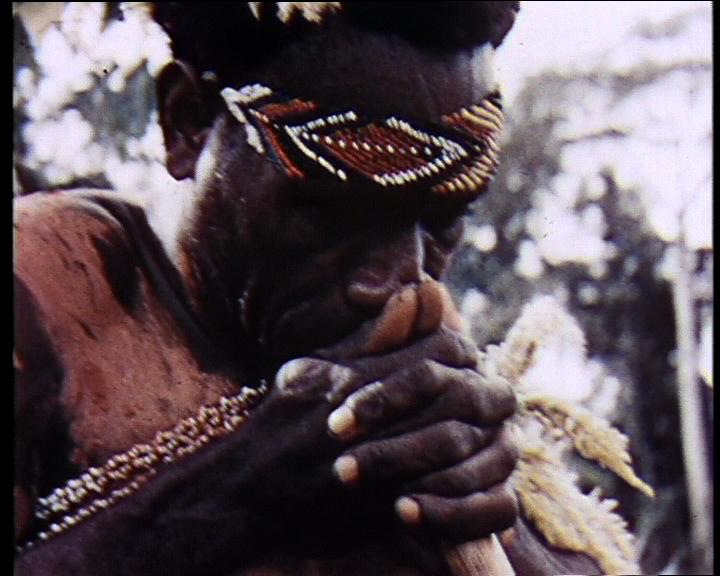

Primitief Nieuw Guinea
Primitive New Guinea
Objectcode
FI/1200/78
Film report from 1956 on the visits to the Ekari tribe, living around the Wisselmeren in the Central Highland, along the Majbrats, on the bank of the Ajamaru-lake in the "Bird's head" as well as the denizens of pioneer bivouac on the Mamberamo river on the north coast. Each tribe has its own traditional customs but attends to their subsistence in a different way.
Contents
Film title: 'Primitive New Guinea', followed by text: 'Shot by Dr. J.A. van der Hoeven', and subtitle: 'On and around the Wisselmeren in Central Highlands' . Intermediate leader. 00.23 SHOTS: Map of Dutch New Guinea on which location of the Wisselmeren in Central Highlands has been circled. Catalina Amphibian aircraft touches down on the Danau Paniai. Shot of this biggest (14 km in length) of the three lakes in the Central Highlands. 01.14 Women in dugouts fishing with nets made of vegetable fibres after which they are having some rest on the bank where they also have a meal. Whilst a man is rooting up the earth with a stick for making a draining ditch for the gardens, women and children are coming home. 02.52 Ekari is inspecting a dance-house, the centre of the pigs' feast, whilst other men are bringing wild pigs, hanging on poles. These are slaughtered ritually with a stick. Arrangements are made about sharing out, thereupon they are roasted. 03.35 Massive ringdances on the floor of the dance-house which last for days and nights, starting quietly but ending savagely. Men and women are looking on, smoking cigarettes. They have a piece of bone in their pierced septum. 04.15 Text projection: 'With the Mejbrats in the centre of the Bird's head (Vogelkop)'. SHOTS: Map of Dutch New Guinea on which the Ajamaru-lake and the Aitinju-lake have been circled. 04.43 Scenic view of the 6 km long Ajamaru-lake in a plane. A massive dance of a tribe rich in children, the girls of which wear loincloths imported from Timor, held up by waistband with cowry shells. 05.32 Children playing 'bearing sticks'. Scenic view of Aitinju-lake surrounded by high jungle, where man is fishing with spear and where canoes are sailing along the banks covered with gardens of tuberous plants. 06.11 Villagers of Mejbrat tribe are looking on at a jurisdiction ritual, with which man drives a thin bamboo-stick into the earth which then is being studied by adat head on the separation of air and earth. After having scratched with his indicator in small hole around the stick, and after having circled with his knife around stick, he cuts the stick in two with brisk stroke, studies the smooth cut, a sign of innocence of the accused. 06.56 Clans head who is considered to be a rich man by his tribe, poses in favour of the building of his house of the dead, sixty meters long, whereto are going long and cheerful processions with amongst others potters. Rope-playing between two rows of girls and boys facing each other, a clown dancing aside, after which ring dance to the tunes of cowry shell is being performed outside and on an elastic wooden floor between two huts. The clans head takes it for granted and climbs into his pile-dwelling. 08.33 Text projection: 'Pioneer bivouac on the Mamberamo'. SHOTS: Map of Dutch New Guinea on which this place and river on the north coast have been circled. 08.51 Picture over 170km navigable, biggest river of Dutch New Guinea, on which a single prau with Papua are met. Exchange of fish caught by Papua for pack of raw tobacco. 09.35 Small Simavi boat approaches Pioneer bivouac and moors and at the same time children come flocking. The older ones however keep their distance. Close up girls having bands against headache around their foreheads. Nurse and Dutch lady and man are greeted. Scenic view alongside dwellings and waterside where mother with daughter and little son pose. Row of women and children sitting in front of airy shelter. 10.43 Chinese trader who buys hides of crocodiles captured by men, measuring the width of the hides, after which the hides are rolled up tightly, tied in packets, which against payment of raw tobacco and a sarong are handed over. 11.10 Men with leaves tied to their backs vanish into the jungle. Leaving a hidden hut, they blow sacred bambu-flutes, which are kept there to raise the wood spirits. Blowing the flutes in a special way on flutes fitted with elegant carved mouthpieces. Close up girls with headache-bands. (tc 09.35) 11.58 Dancing of groups of men and women separated from each other, imitating the behaviour of the national bird, the cassowary. 12.18 Shore vegetation and surface of the water of the river, filmed on the expediton's return. 12.35 Text projection: THE END with RVD's filmrights' logo. 12.47 End leader 13.09 THE END. (source: www.beeldengeluid.nl)
Year
1956
Technical detail
Film type
Documentary
Color
Spoken comment
Dutch
Thesaurus terms
Cultural
Cultural origin » Papua » Central Highlands » Central Highlands west » Wissel Lakes Region » Ekari
Cultural origin » Papua » Bird's Head » Vogelkop centraal » Ayfat Ayamaru Region » Maibrat
Cultural origin » Papua » Noordkust » Sarmi Region » Kwerba
Geographic
Geographical term » Papua » Division Central New-Guinea » Subdivision Paniai » Paniai
Geographical term » Papua » Division West New Guinea » Subdivision Teminabuan » Ayamaru
Geographical term » Papua » Division Hollandia » Sub Division Sarmi » Amberno
References
Links
http://www.beeldengeluid.nl